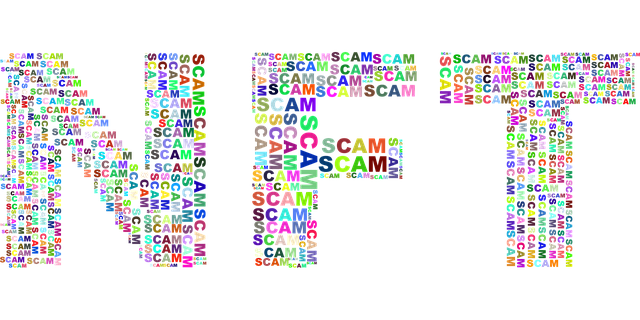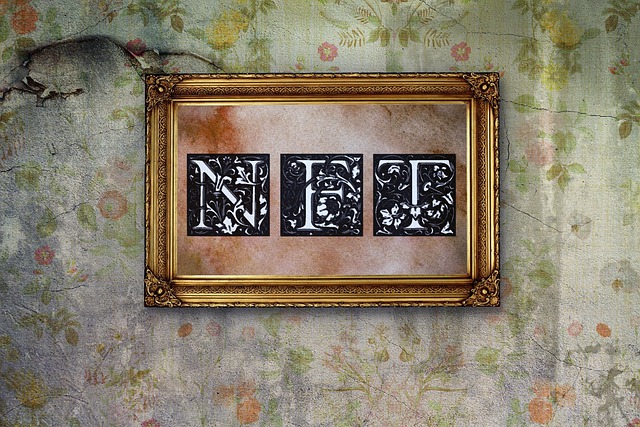The Artists Business Lounge
Art Business Coaching for Visual Artists
Navigating NFTs: Protecting Artists from Scams in the Digital Art World

Are you sick of all the Instagram messages and comments asking to buy your art as an NFT? And wonderg why you get these messages?
The advent of Non-Fungible Tokens (NFTs) has revolutionised the art industry, providing artists with unprecedented opportunities to tokenise and monetise their digital creations.
There are certainly pros and cons to working with NFTs (environmental impact being just one con) and they may be more suited to some artist’s practice than to others.
Irrespective of the pros and cons, one thing we have all seen is the rise of NFT scams. Artists who have never considered creating NFTs (and those who have) getting cold call comments in their Instagram DMs asking to buy their art as an NFT (even though they don’t already create NFTs). Frequently wondering is this real and then spending valuable time trying to learn about NFTs.
So what’s that all about?
Well, sadly, along with the growing popularity of NFTs, scams targeting artists have also become prevalent.
In this blog post, we will delve into the various types of NFT scams artists may encounter and provide essential tips on how to safeguard against them, ensuring a secure and successful journey in the digital art world.

NFT Minting Scams
NFT minting scams involve unscrupulous individuals stealing artists’ digital artwork and tokenising it without their consent or rightful ownership. These scammers may use stolen art or duplicate existing NFTs, effectively robbing the original creators of their intellectual property and potential profits.
How to Protect Yourself:
Metadata protection: Consider using blockchain-based copyright protection services that embed your ownership details in the NFT metadata, establishing clear proof of ownership.
Phishing and Impersonation Scams
Phishing scams target artists by sending fraudulent emails or messages posing as legitimate NFT platforms or art marketplaces. These scams aim to extract sensitive information like private keys or login credentials from artists under the guise of account verification or completing a transaction.
How to Protect Yourself:
Verify sender details: Always double-check the sender’s email address and domain before responding to any requests. Legitimate platforms will never ask for sensitive information via email.
Avoid clicking suspicious links: Refrain from clicking on links from unknown sources. Instead, visit NFT platforms directly through their official websites or apps.
Fake NFT Auctions
Fake NFT auctions lure artists into selling their digital art through counterfeit platforms that mimic legitimate marketplaces. These scams deceive unsuspecting sellers into thinking they are participating in a genuine auction, only to be left with worthless tokens or stolen art.
How to Protect Yourself:
Research the auction platform: Thoroughly investigate any auction platform before participating. Stick to reputable NFT marketplaces with positive reviews and a history of successful sales.
Verify seller identity: Confirm the identity of the seller and ensure they have a credible track record within the NFT community.
Pump-and-Dump Schemes
Pump-and-dump schemes manipulate NFT prices through false advertising and artificially inflating demand. Scammers purchase NFTs at a low price, spread misinformation to increase demand, and then sell their tokens at an inflated price, leaving other buyers with devalued assets.
How to Protect Yourself:
Avoid overly speculative purchases: Exercise caution when buying NFTs during sudden spikes in demand. Perform research and base your decisions on the artwork’s intrinsic value rather than short-term trends.
Evaluate historical data: Analyse the historical price data of NFTs before making any purchases. Steer clear of tokens with suspicious price patterns.
Fake Celebrity Endorsements
Some scammers exploit the popularity of celebrities and well-known artists by falsely associating them with NFT projects or endorsing fraudulent art collections. These deceptive tactics lure unsuspecting artists and collectors into investing in fake or unauthorised tokens.
How to Protect Yourself:
Verify celebrity endorsements: Cross-check with official social media accounts or reputable news sources to confirm celebrity endorsements for NFT projects.
Exercise scepticism: Be cautious of extravagant claims and endorsements that seem too good to be true.
Stolen Wallets and Hacked Accounts
Hackers may target artists with valuable NFT collections by compromising their digital wallets or accounts. Once they gain access, they transfer the NFTs to their own wallets, leaving artists at a loss.
How to Protect Yourself:
Strengthen security measures: Use strong, unique passwords for your digital wallets and NFT platform accounts. Enable two-factor authentication to add an extra layer of protection.
Regularly monitor accounts: Keep a close eye on your digital wallets and NFT platforms to detect any suspicious activity promptly.

Conclusion
Of course, if you decide that NFTs are not for you, you are unlikely to ever waste time or energy on potential scams.
Whether or not, you intend to ever create NFTs, as they continue to gain traction in the art world, it is crucial for artists to remain vigilant and informed about the potential scams that may target them.
If NFTs are part of what you aspire to use in your art career, then implementing these essential tips and protective measures can ensure you confidently navigate the NFT landscape, ensuring the security of your intellectual property and investments.
Approach minting NFT’s with the same diligence as you would any other selling avenue. Research reliable NFT platforms – OpenSea is one of the most highly regarded. Check this list from SoluLab on Best NFT Art Marketplaces as a starting point. Talk to other artists who use these platforms. Look at cost, security, reliability and how well the platform fits your needs.
Remember to:
Use metadata protection to safeguard your digital art.
Verify sender details and avoid sharing sensitive information.
Conduct thorough research on auction platforms and sellers before participating.
Make informed, rational decisions when purchasing NFTs, avoiding speculative behavior.
Verify celebrity endorsements and be wary of fraudulent claims.
Strengthen security measures to protect digital wallets and accounts.

Some of the ways you can work with me
Join the Success System Program, our amazing 12-month bells and whistles program. It’s flexible and offers step by step support.
Individual Coaching – find out more here and submit your expression of interest

